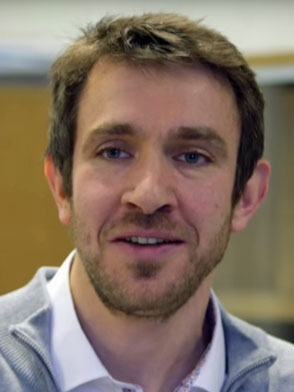← Retour vers le trombinoscope
 Maître de conférences
Maître de conférencesMail :
Tel : 03 22 82 74 76
Fax : 03 22 82 75 60
La thématique développée concerne la synthèse de nouveaux composés polysaccharidiques et en particulier les glycoaminoglycanes (GAG). Cette famille de polysaccharide est présente dans les tissus biologiques de nombreux organismes vivants (humains, bactéries). Ces GAGs jouent un rôle fondamental dans des phénomènes physiologiques (reconnaissance, développement et croissance) ou pathologiques (inflammation, métastase). Ils constituent alors une cible de choix pour le traitement de pathologies variées.
Nous cherchons alors à synthétiser de nouveaux oligosaccharides anioniques qui puissent mimer les substrats naturels en variant la nature de la liaison glycosidique, en modulant la position des groupements anioniques et en apportant des modifications aussi bien de nature stéréochimiques que fonctionelles sur l’unité saccharidique.
Pour ce faire nous utilisons des méthodes modernes de synthèse organique comme la fonctionnalisation régio- et stéréosélective, l’introduction de la diversité structurale via des voies de synthèse divergentes et non-linéaires et tout en limitant notre impact environnemental (C-H activation, absence de groupes protecteurs, micro-onde).
DP2, a Carbohydrate Derivative, Enhances In Vitro Osteoblast Mineralisation |
Mechanochemical synthesis of (4S)-N-alkyl-4,5-bis-sulfooxypentanamide via a one-pot sequential aminolysis-sulfation reaction of (S)-γ-hydroxymethyl-γ-butyrolactone (2H-HBO) |
Synthesis of new sulfated disaccharides for the modulation of TLR4-dependent inflammation |
First Sustainable Aziridination of Olefins Using Recyclable Copper-Immobilized Magnetic Nanoparticles |
Efficient Synthesis of N-Alkyl Polyhydroxylated Pipecolamide Compounds from d-Glucurono-6,3-lactone |
Oligogalacturonic Acid Inhibits Vascular Calcification by Two Mechanisms: Inhibition of Vascular Smooth Muscle Cell Osteogenic Conversion and Interaction With Collagen |
Glycochemical Applications of Diels-Alder Reaction |
Chapter 11 Anionic oligosaccharides: synthesis and applications |